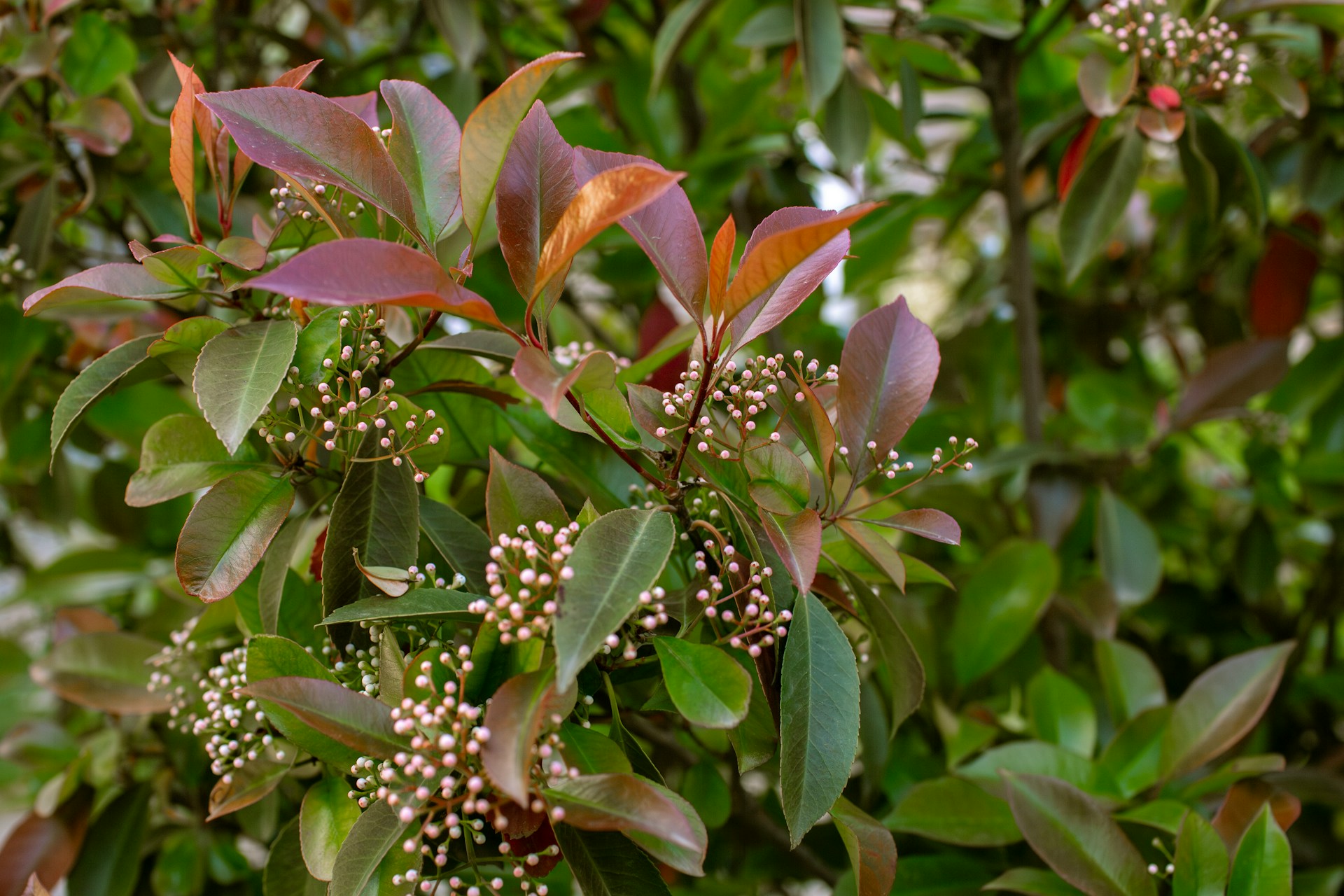Red Robin Die-Back
What's causing it and what should you do about it?
Over the past year, we’ve seen a significant rise in Photinia x fraseri ‘Red Robin’ die-back across gardens—and if your hedge is looking sparse, discoloured, or just plain unhappy, you're not alone.
This striking shrub, known for its fiery red new growth and quick coverage, has become a popular choice for hedging. But lately, many Red Robins are struggling to cope with disease and environmental stress. In some areas, especially around the Bay of Plenty, they’re failing altogether.
What Does Die-Back Look Like?
Die-back symptoms in Red Robin typically include:
- Browning or blackening of leaf tips and margins
- Sudden leaf drop, sometimes in large sections
- Bare, twiggy branches—particularly at the top of the plant
- Dark leaf spots and shrivelling new growth
Once this starts, plants decline quickly and the best thing you can do is just remove and replace them with another plant.
The Main Culprits
Fungal Disease (Entomosporium Leaf Spot)
The most common cause of decline. This fungus thrives in cool, wet weather—conditions we’ve had in spades. Once established, it causes leaf spotting, premature leaf drop, and stem die-back. Repeated infections severely weaken the plant over time.
Root Rot and Poor Drainage
Red Robin hates having wet feet. In heavy clay or poorly drained soils, roots can rot—especially with consistent rain. When roots fail, the top growth quickly follows.
Environmental Stress
A combination of pruning at the wrong time, cold snaps, or wind damage after leaf loss can all contribute to long-term plant decline.
Should You Try to Save It?
In short: No.
While light infections or stress can sometimes be managed, Red Robin rarely recovers fully once die-back sets in. Even with pruning, feeding, and good airflow, most plants don’t return to their former glory.
If your hedge is looking sickly, patchy, or bare, replacement is often the best option. It’s disappointing, but it prevents the spread of infection to nearby plants and gives you the chance to choose a better-suited species.
What to Plant Instead?
Looking for a more resilient alternative? Here’s a few options we’ve been recommending to our customers:
- Camellia sasanqua – Excellent for hedging, tolerant of moisture, and brings seasonal flowers too.
- Viburnum tinus – Tough, evergreen, and reliable in a range of conditions.
- Griselinia littoralis – A great option in drier or coastal areas (but avoid overly wet soil).
- (And while Coprosma looks great, it’s not suitable for wet feet—so give it a miss in soggy spots.)
Advice for Bay of Plenty Gardeners
If you're in the Bay of Plenty region, we don’t recommend planting Red Robin at all anymore. The conditions here—warm, humid, and often damp—are ideal for fungal diseases, and most Red Robins planted in the last 5–10 years are struggling or have failed. There are simply better choices for your time, energy, and money.
Pop into our Oropi Rd garden centre for a browse of our plants that we recommend for planting instead. We are open every Friday, Saturday and Sunday, from 10am to 2pm, and all our plants are just $7.50ea.


Want to get our updates direct to your Inbox?
Join our Garden Journal here for all our latest updates and events.